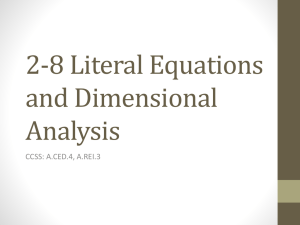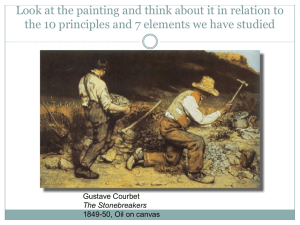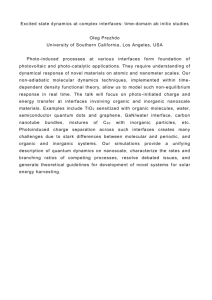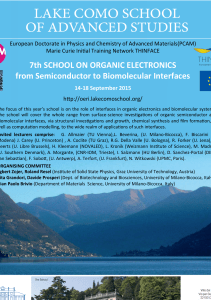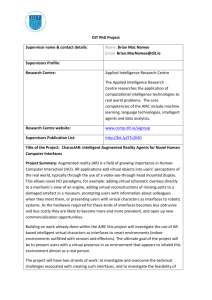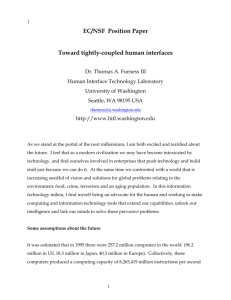Thesis Prospectus
advertisement
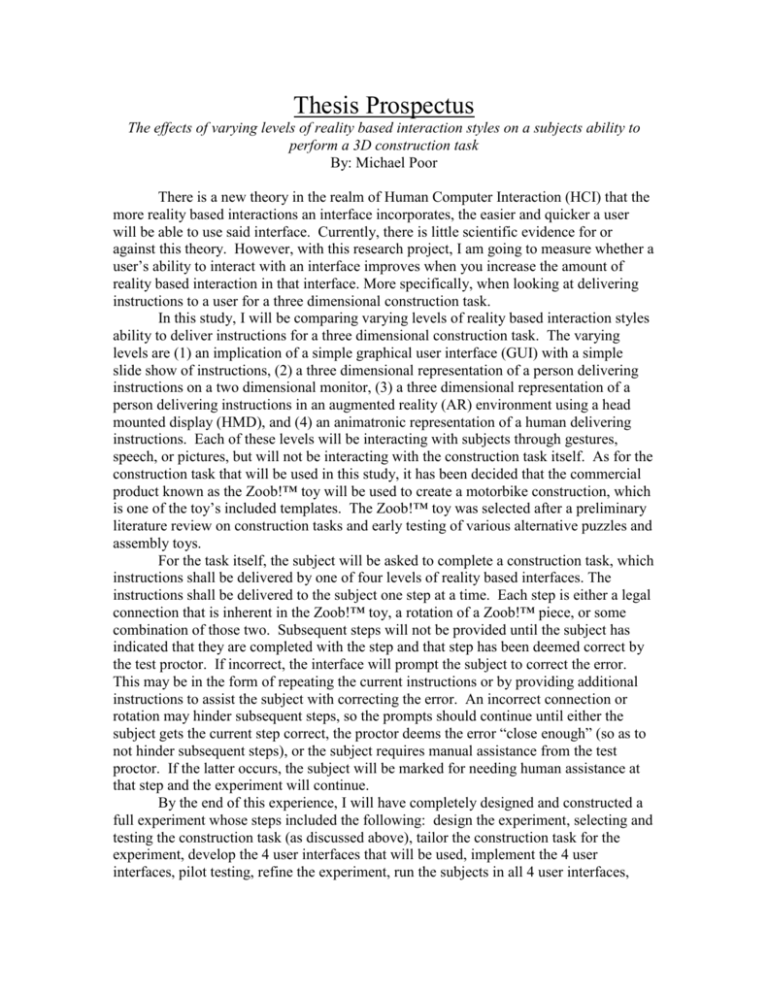
Thesis Prospectus The effects of varying levels of reality based interaction styles on a subjects ability to perform a 3D construction task By: Michael Poor There is a new theory in the realm of Human Computer Interaction (HCI) that the more reality based interactions an interface incorporates, the easier and quicker a user will be able to use said interface. Currently, there is little scientific evidence for or against this theory. However, with this research project, I am going to measure whether a user’s ability to interact with an interface improves when you increase the amount of reality based interaction in that interface. More specifically, when looking at delivering instructions to a user for a three dimensional construction task. In this study, I will be comparing varying levels of reality based interaction styles ability to deliver instructions for a three dimensional construction task. The varying levels are (1) an implication of a simple graphical user interface (GUI) with a simple slide show of instructions, (2) a three dimensional representation of a person delivering instructions on a two dimensional monitor, (3) a three dimensional representation of a person delivering instructions in an augmented reality (AR) environment using a head mounted display (HMD), and (4) an animatronic representation of a human delivering instructions. Each of these levels will be interacting with subjects through gestures, speech, or pictures, but will not be interacting with the construction task itself. As for the construction task that will be used in this study, it has been decided that the commercial product known as the Zoob!™ toy will be used to create a motorbike construction, which is one of the toy’s included templates. The Zoob!™ toy was selected after a preliminary literature review on construction tasks and early testing of various alternative puzzles and assembly toys. For the task itself, the subject will be asked to complete a construction task, which instructions shall be delivered by one of four levels of reality based interfaces. The instructions shall be delivered to the subject one step at a time. Each step is either a legal connection that is inherent in the Zoob!™ toy, a rotation of a Zoob!™ piece, or some combination of those two. Subsequent steps will not be provided until the subject has indicated that they are completed with the step and that step has been deemed correct by the test proctor. If incorrect, the interface will prompt the subject to correct the error. This may be in the form of repeating the current instructions or by providing additional instructions to assist the subject with correcting the error. An incorrect connection or rotation may hinder subsequent steps, so the prompts should continue until either the subject gets the current step correct, the proctor deems the error “close enough” (so as to not hinder subsequent steps), or the subject requires manual assistance from the test proctor. If the latter occurs, the subject will be marked for needing human assistance at that step and the experiment will continue. By the end of this experience, I will have completely designed and constructed a full experiment whose steps included the following: design the experiment, selecting and testing the construction task (as discussed above), tailor the construction task for the experiment, develop the 4 user interfaces that will be used, implement the 4 user interfaces, pilot testing, refine the experiment, run the subjects in all 4 user interfaces, analyze the data, and connect the results with elements of the Reality Based Interfaces (RBI) theory. In conclusion, this experiment is not attempting to prove the entirety of the aforementioned theory, but rather that varying levels of reality based interaction styles have an effect on a user’s ability to interact with an interface. From this experiment, it is the hope that a more expansive study can be conducted to further investigate the extent of the effects that reality based interaction styles have on a user’s ability to interact with the next generation interfaces. Committee Members Faculty Advisor: 2nd Committee Member: 3rd Committee Member: Outside Member: Dr. Robert Jacob Dr. Sarah Frisken Dr. Samuel Guyer UNKNOWN
